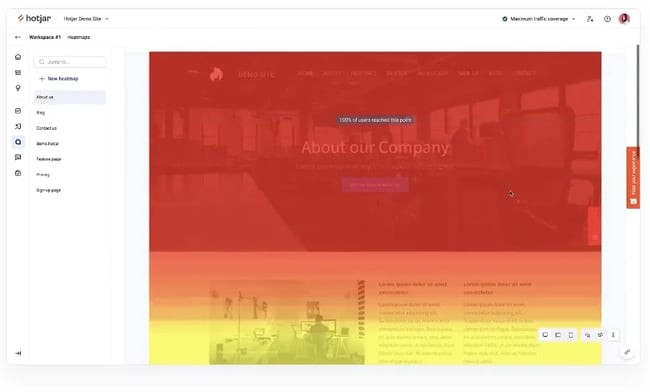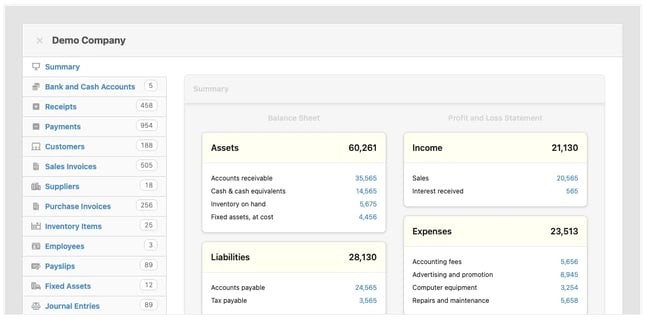Free and paid tools for small businesses save time, streamline operations, and, importantly, save money.
From my experience running a small business, I know it doesn’t always feel productive to invest time and money into a new tool, but the advantages far outweigh the disadvantages.
I know how overwhelming it can be to choose the right tools, so I’ve compiled a list of 20 free and paid tools for small businesses. There’s something for every budget, and where I’ve tried and tested them, I’ve given you my unbiased review.
Table of Contents
- Why Do You Need Small Business Tools?
- Types of Tools for Small Business
- How I Curated the Best Free Tools for Small Businesses
- 20 Free Tools to Help You Run Your Business
Why Do You Need Small Business Tools?
Small businesses need tools. The early days of building a business are a scramble, and small teams do many tasks.
The more pressure you can relieve on yourself and your team, the better. There are a host of benefits to using tools, but here are the top four.
Increased Productivity
Tools are a cheap way to improve operations, automate work, and “outsource” tasks you don’t want to do.
With your newfound freedom, you can put your time into work that a) helps the business and b) fulfills you.
With focused time without niggling tasks, everyone will feel more motivated to work. Plus, tools will take some tasks in their entirety off your to-do list so you can focus on the heavy-hitting work.
Cost Savings
Sometimes — even though I’m writing this article — I also find it hard to part with hundreds or thousands of hard-earned cash to spend on a tool.
The trouble with this mentality is that it’s short-term thinking. The money out is measurable, but the money saved from tools can be harder to qualify.
It’s worth making an effort to examine a tool’s savings to vet its worth. You must consider hidden benefits, such as happier staff who can automate tasks they dislike, leaving them more motivated for what they love.
Scalability
If you want to scale your business, tools will help.
Increased productivity alone will help, but tools will force you to create processes that can be shared with team members. If you can onboard new team members or clients into your operations quickly and smoothly, you can grow faster.
Additionally, tools like cloud services can scale as you need them, allowing you to store data without risking big migration projects or paying for space that you don’t need yet.
Improved Decision-Making
Many tools are designed to help you make decisions. Tools, especially those including AI, can analyze large data sets and compile information that you can use to steer your business.
Types of Tools for Small Business
You’ll want to assess the tools that most benefit your unique business, but let’s look at some commonly used tools.
Customer Relationship Management (CRM) Software
If you’re still in spreadsheets, it’s time for an upgrade.
CRM software is an absolute must. Your pipeline of leads is arguably the most important element of your business. You want to manage them properly.
A good CRM will help your team work efficiently, nurture leads, and many have automation and AI add-ons that elevate your sales processes.
Project Management Software
I’ve been a project manager for over nine years. When I started out, my project management was done in spreadsheets and emails.
When I discovered project management tools, I realized how badly I’d missed out. I now run my entire business and client businesses in either Asana, Motion, ClickUp, or Trello.
Digital Marketing Tools
My small business is a boutique SEM agency, so digital marketing tools are a must for me. Over the years, I’ve tried and tested many of them. Digital marketing tools can help with analysis so you know what’s working and where to invest your cash.
Plus, many marketing tools can do some of the marketing for you. You can use generative AI which is often included, or you can schedule marketing campaigns ahead of time.
Storage Tools
Google Drive, SharePoint, and Dropbox are tools that will help your team work smarter.
Instead of sharing documents in emails, you can store everything online and people can edit the same document without issue. Everything is stored on the cloud, so the risk of losing documents is small.
If you’re still emailing documents, you have to shift to a storage tool.
How I Curated the Best Free Tools for Small Businesses
I wanted to create a list of small business tools that almost anyone could try.
They needed to be:
- Affordable. For me, this meant free, cheap, or able to return their investment in abundance.
- Easy to use. It can be challenging to get a team to work with a new tool and a new process, so I wanted the tools in this list to be intuitive.
- Good customer support. We all need a hand from time to time. All the tools in this list have good customer service or a demo so you can try them.
- Multi-purpose. If one tool can do two things well, even better. For small businesses, the less you have to invest, the better.
- Scalable. An investment into a tool ideally brings longevity. I wanted to include the tools that will grow with a small business.
20 Free Tools to Help You Run Your Business
1. HubSpot CRM
In sales, speed matters. Think about it: In the time your salespeople spend digging through their inboxes for information about a prospect, they could be losing a sale to a competitor.
HubSpot CRM enables sales teams to work more efficiently by providing reps with a detailed history of their interactions with a prospect.
Unlike other systems, HubSpot CRM is both intuitive and automatic, making it easy for users to log emails, record calls, and manage their data.
This easy access to touchpoints helps ensure that reps aren‘t sending repeat emails or mismanaging their time with prospects who aren’t interested.
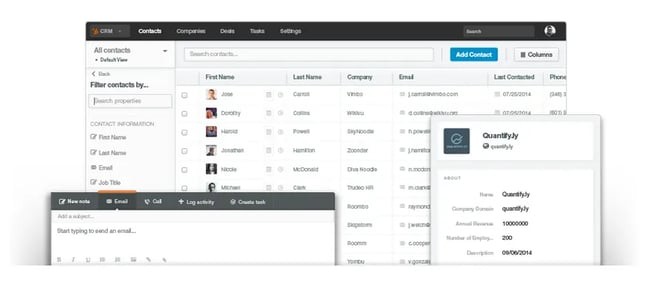
My experience with HubSpot: HubSpot is ideal for small businesses because it’s intuitive to use. To begin with, I signed up for a free account. The guided tour within the CRM took me through everything.
Plus, there’s an abundance of videos and guides available on the HubSpot website. HubSpot will certainly scale with your business.
2. HubSpot’s Free Marketing & Lead Generation Software
Looking for a free tool to help generate leads? Check out this tool from HubSpot.
HubSpot’s Marketing and Lead Generation Software can be used as a free WordPress plugin and standalone web app.
Built to help you better understand your website visitors, this tool makes it easy to find out not only who is on your website but also what they're doing.
With this tool, users automatically get insights into everyone who fills out a form on their website. From pages they‘ve visited to social networks that they’re on, these details can help you make more strategic marketing moves.
3. Boomerang for Gmail
Ever want to send an email on a Friday but don‘t want it to get lost in the recipient’s mailbox over the weekend?
With Boomerang for Gmail, you can write an email now and schedule it to be sent at a more convenient time.
But that‘s not all. Boomerang boasts a ton of other features designed to make your life easier.
For example, if your inbox feels a little unruly, you can choose which emails you’d like to temporarily archive until you need them. Simply pick the time and date that you‘d like them to reappear, and they’ll be there — magical.
4. HubSpot’s Free Persona Generator
Thinking through your personas is important.
You might think you know who you’re targeting, but setting time aside to identify your target persona will help with all the marketing.
Plus, you might be surprised at the results when you give this task the time it deserves.
Hubspot’s free personal generator guides you through a seven-step process to help you determine your target persona.
At the end, all the information is consolidated in a stylish design, ready for download. You can add more personas and share them with your team.
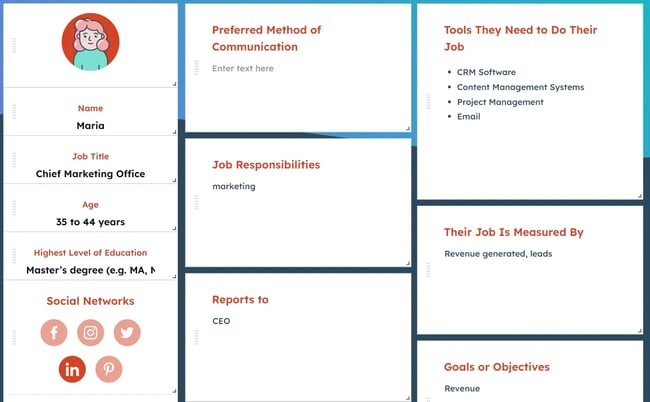
5. Hubspot’s Free Brand Kit
HubSpot’s free brand kit covers the foundations of any good brand: logo, typography, colors, your website, and marketing, such as social media profiles.
The free tool makes setting up your first brand very easy. It will walk you through your brand identity, providing ideas and examples. At the end, you will get a brand guideline that you can download.
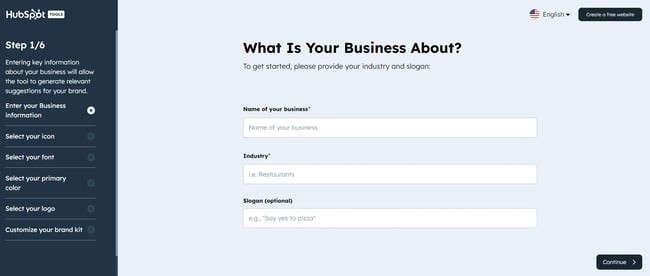
6. HubSpot’s Free Email Signature Generator
With HubSpot’s free Email Signature Template Generator, you can create an on-brand email signature in minutes.
All you need to do is choose your favorite template, fill out the form with your professional details (name, website, role, etc.), fill in the brand colors, and the generator does the rest.
Once you’re happy with the finished product, you can copy the code or copy and paste the signature into your favorite email app. Instructions on how to do this are provided once the email signature is generated.

My experience with HubSpot’s free email signature generator: I used this tool to generate an email signature, and it truly could not have been easier! There are six templates to choose from. Once I received the signature code, I changed the details so my team’s signatures matched. If you’re looking for a quick email signature, this is it!
7. Customers.ai
Customers.ai enables companies to proactively engage with website visitors through identification and remarketing.
With the tool you can capture first-party data, sync visitors to remarketing audiences, track the customer journey, and turn your anonymous website visitors into customers.
This AI-driven solution also features personalized outreach, high-converting retargeting, and high-def customer journey insights with its ad and email tools, as well as measurement and integration capabilities.
Lastly, integrate your MarTech stack. Automatically connect the opt-ins, signups, and leads generated from your chat messaging channels to your CRM, such as HubSpot, email software, training & webinar platforms, and other business applications.
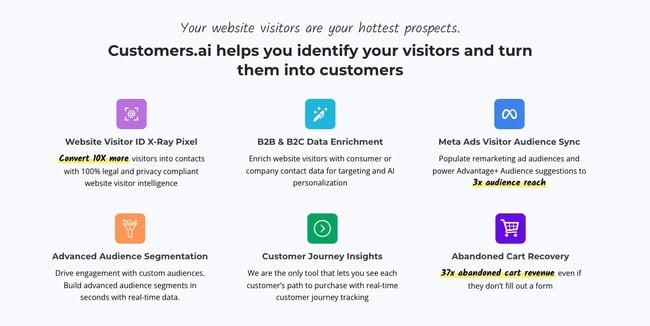
8. Trello
Keeping your team on the same page — whether you‘re working remotely or side-by-side — isn’t always easy.
With new ideas, changing deadlines, and last-minute adjustments happening throughout the day, you need a place to keep everything unified.
That's where Trello comes in.
At a glance, Trello makes it easy for users to visualize what tasks are on their plate, what their team members are working on, and what's already been completed.
Functioning like a virtual bulletin board, the tool offers boards and cards to help you and your team organize a project or just keep tabs on your day-to-day work.
With cards, users can upload file attachments, add comments, create checklists, assign due dates, and so much more.
And whenever a change is made to a card, Trello's notification system can send an update to the members of the board to keep everyone in the know.
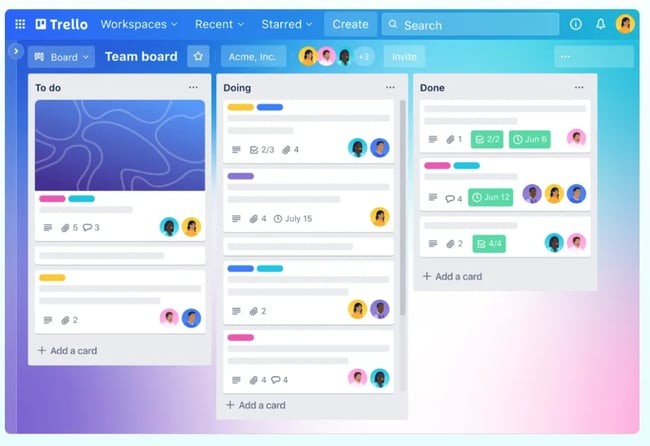
My experience with Trello: I use Trello both personally and professionally. I choose Trello as the project management tool for a few of my clients because it’s so easy, and you can do a lot for free.
Trello allows businesses to use many of its features for free, and you can invite up to ten members to collaborate before paying for it.
9. Slack
Meetings, emails, and unexpected desk visitors can sometimes make it difficult to actually get work done during the day.
Well, with an internal team communication tool like Slack, your team can collaborate, share files, give feedback, and provide quick solutions, all using real-time messaging.
According to Slack's website, teams using its software find a 39% decrease in meetings and a 60% reduction in internal email, resulting in a 47% increase in team productivity.
Slack also offers fully native apps for iOS and Android, making it easy for you to pick up where you left off after you leave your desk.
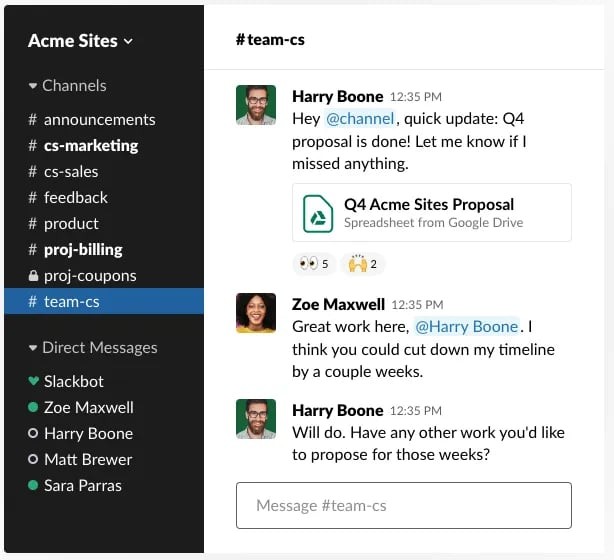
My experience with Slack: Love it or hate it, Slack is probably the best communication tool for businesses, but I recommend using it smartly. If you push all your communication into Slack, you’ll struggle operationally.
My recommendation with Slack is that you use it for:
- Quick questions such as asking for documents or asking for a quick meeting.
- Chasing a colleague on an action.
- Sharing good news.
For anything project-related, keep the communications in the project management tool of your choice.
10. HubSpot’s Free Blog Ideas Generator
This AI tool will take the mental load out of generating blog ideas. It’s free to use with HubSpot’s free CRM.
All you need to do is visit the generator, start with one idea as broad as you like, and the AI will do the rest. If you don’t love the original ideas, you can regenerate them until you find one you want to publish.
Once you’ve found your blog title, the AI will generate an outline, including headings, that you can amend as you like.
The AI can write the entire article once you’re happy with the outline.
I recommend giving the blog a thorough edit and adding your unique experience, but this generator will give you a strong starting point and remove any writer’s block.
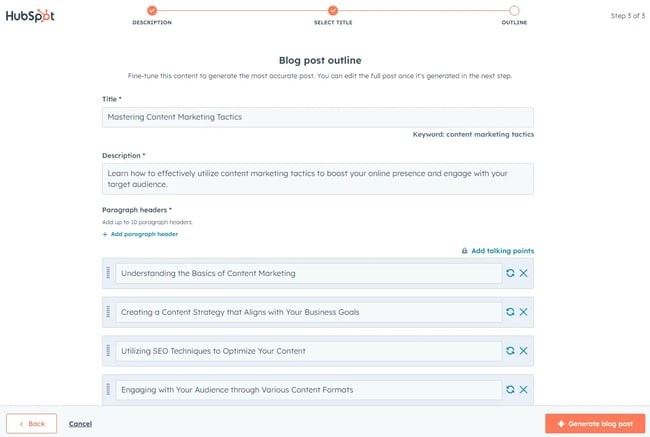
11. Dropbox
Dropbox provides businesses with an easy way to share and store photos, videos, documents, spreadsheets, and other files using desktop and mobile devices.
By eliminating the need for flash drives, Dropbox makes it easy for users to access the information where they need to when they need to.
In terms of collaboration, the tool aims to simplify the way teams collaborate and share files — proving to be especially useful for remote or hybrid teams.
Users can even add comments to shared files, which saves time and eliminates the need for another email in your inbox.
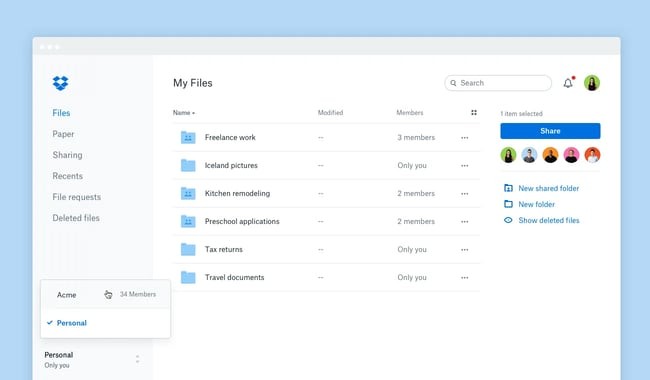
My experience with Dropbox: I find Dropbox saves a lot of emails and having a shared place where everything lives will encourage better processes for handling documentation. I used it for a long time before I shifted to Google Apps. I think both are excellent tools; you just need to pick the one that suits you best.
12. Google Workspace
Google Workspace is a package of cloud-based productivity apps that make it easy for businesses to collaborate in real time.
With access to apps like Gmail, Calendar, Drive, Docs, Meet, and more, you and your team will have the means necessary to innovate, brainstorm, and document all of your great ideas.
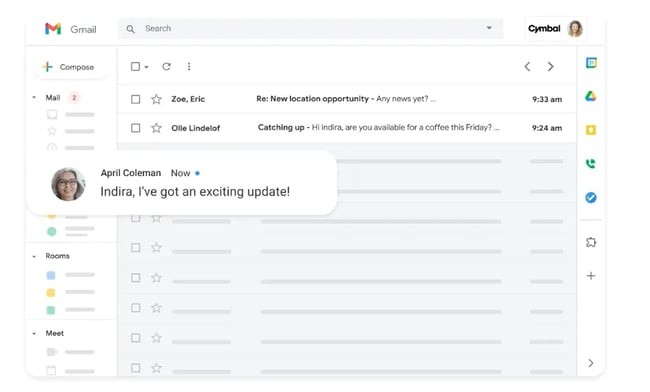
My experience with Google Workspace: I would be completely lost without Google apps. I do everything there, personally and professionally. Google apps have saved me money since I no longer pay for Microsoft Word etc., and for now, the free version of Google Drive and apps has been enough for my small business.
13. Dropbox Sign
Ah, paperwork. One of the worst timesucks of your day.
Luckily, there is a tool to help free up some of that time.
Rather than spending your day tracking down the right people to sign the right documents, Dropbox Sign (previously HelloSign) makes it easy for users to sign documents and request e-signatures.
Once the document is completed, everyone who signed will get a copy delivered straight to their inbox to keep for their records.
Worried about security? You don't have to be. Dropbox Sign uses SSL encryption during file transfers to keep your documents safe.
To make your life even easier, Dropbox Sign integrates with many of the apps you're already using — Gmail, Google Apps, Dropbox, Evernote, HubSpot, etc.
This means you can sign legally binding documents in 30 seconds or less without leaving your Gmail inbox.
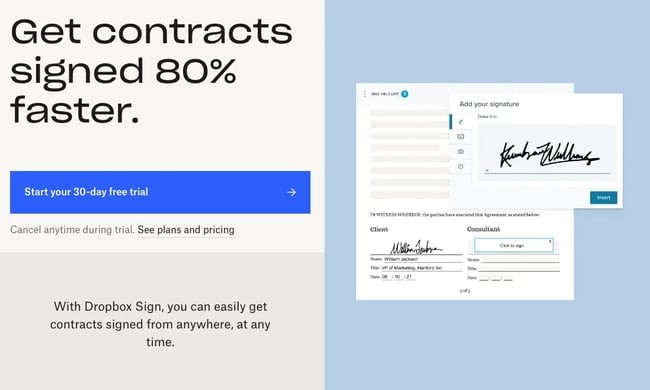
14. IFTTT
Running a business requires a lot of hands. Trouble is, your new business budget might not stretch enough to cover new talent. In other words, you‘ve got to work with what you’ve got.
Rather than allowing routine tasks to consume your precious time, try IFTTT. Short for “if this, then that,” IFTTT is a productivity tool that automates your important online processes. (Essentially, it's like autopilot for your day-to-day tasks.)
IFTTT links together some of your favorite cloud-based services, and can trigger a specific action based on particular events. To clarify, here is one example below, which connects any new HubSpot Marketing Blog posts into an SMS alert.
You can also explore their full library of applets and services.
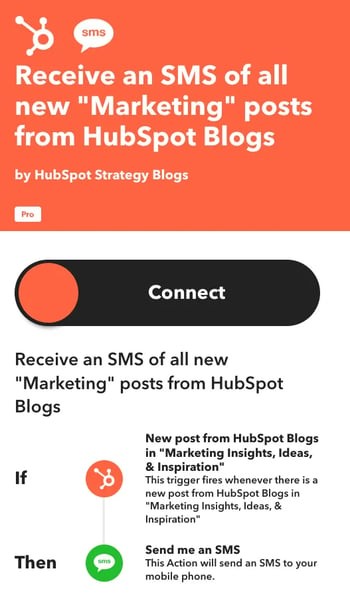
15. Hotjar
The health of your business often has a lot to do with how visitors interact and respond to your website. But how can you optimize for the user when you don't know what the user wants?
With Hotjar, you can leverage heat mapping technology to visualize your website visitors‘ clicks, taps, and scrolling behavior. These behaviors serve as strong indicators of what your visitors are looking for and where they’re getting stuck.
By identifying these opportunities for conversion optimization and improvement, you can then make iterations to your website design and copy in an effort to streamline the user experience.
Looking for more ideas on how you can use the insights you gather using Hotjar to strengthen your website? Here are a few suggestions from its website:
- Discover how visitors react to longer or shorter pages.
- Overhaul forms to generate more leads.
- Remove or rethink ignored content.
- Reveal anxieties about trust or confusing policies.
My experience with HotJar: I use HotJar on most of my client sites. Seeing where clicks are happening and scroll depth helps me make digital marketing decisions. It’s really easy to use, and you can start for free. If you love the tool as much as I do, you’ll likely upgrade to get more marketing data.
16. Canva
Canva is an easy-to-use tool that allows both designers and non-designers to create designs and documents without a ton of technical knowledge.
Thanks to features like the drag-and-drop functionality, free icons and shapes, collections of fonts, and helpful templates, users are equipped with everything they need to pull off quality designs for presentations, social media, reports, and even business cards.
Canva even offers a Design School, where users can go to learn more about design 101, branding, color theory, design trends, typography, and much more.
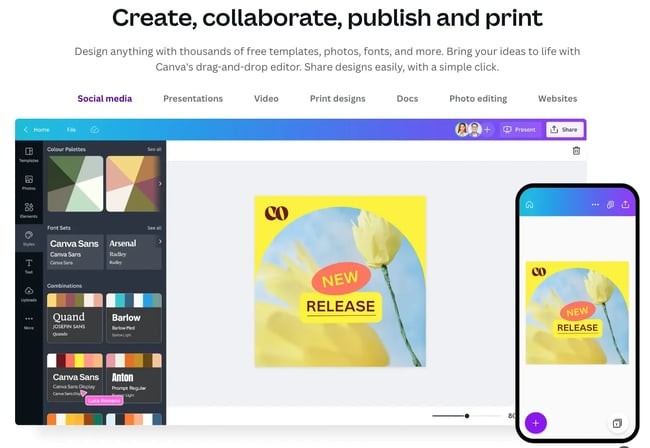
My experience with Canva: I use Canva every single week without fail. I think the functionality and benefit of the tool far outweigh the cost. I’m not a good designer, but with Canva, I can create something decent enough to post on my LinkedIn profile.
I use Canva to design proposal documents, create marketing collateral and guides, and I've even edited photographs with its AI features!
17. Evernote
Ever find yourself on the train or at a red light when a great idea strikes?
With Evernote, you can catalog your thoughts on any device to ensure that you don‘t forget to execute on it. And because Evernote syncs across all of your devices, it’s easy to jot down an idea when it hits, and then run with it when you get to your desk the next morning.
The free online workspace provides users with a platform for writing, collecting images and snippets from around the web, and communicating, collaborating, and sharing with colleagues.
Thanks to the tool's screen-friendly layout, you can even transform your notes into a quick presentation for an impromptu meeting on your latest project.
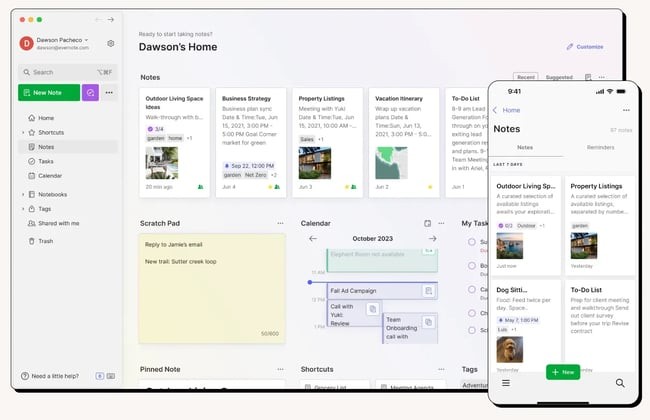
18. Manager.io
Want to save time and money? Who doesn't?
Manager.io makes free accounting software for small businesses. Noteworthy features include: General ledgers, cash management, bank reconciliation, expense claims, accounts receivable, accounts payable, estimates and quotes, purchase orders, billing and invoicing, and so much more.
The folks at Manager.io place a heavy emphasis on design, and that's highlighted through the functionality of the tool.
Unlike traditional accounting software, Manager.io doesn‘t require users to enter opening balances or configure tax variables before they can issue an invoice or record a payment.
In fact, getting started requires very few configurations, so you get straight to what’s important: your accounting needs.
19. Google Analytics: G4
For small businesses, G4’s free services aim to simplify the way users view and improve the performance of their websites.
Not only does the solution provide you with the means necessary to report on your website's progress each month, but these insights can also help you better understand your visitors so that you can create a marketing experience that keeps bringing them back.
My experience with G4: G4 is an absolute must for any business taking digital marketing seriously. I use it to track user behavior, top pages, conversions, revenue, and more. You must set G4 up, even if you’re not using it, because eventually, you will want to take your marketing seriously.
It’s completely free, and trust me, you will be glad for the data in G4. Plus, once it’s done, it’s done!
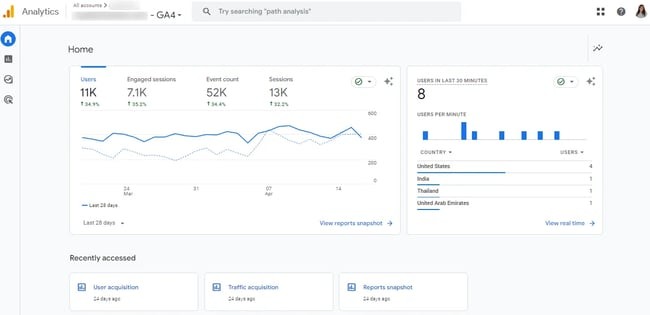
20. HubSpot’s Free Website Grader
If you depend on your website for leads, you’ll want to know how it performs objectively. This is particularly important if you’re doing a lot of digital marketing, especially SEO. A healthy site has a better chance of ranking.
HubSpot’s free website grader is easy to use. Visit the website grader, add the web address, your email, and you’ll receive a report with your website’s performance that includes a breakdown of how you can improve it, and short tutorial videos to help.
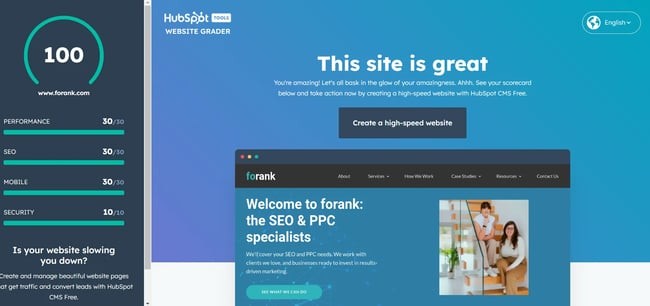
My experience with the free website grader: I was impressed with this tool. As a marketer, I often examine my clients' sites to determine their overall performance and health. Other tools like Google Page Insights provide this information, but I appreciated the video tips that HubSpot offered. This is an excellent resource for those who are DIY-ing their web performance.

